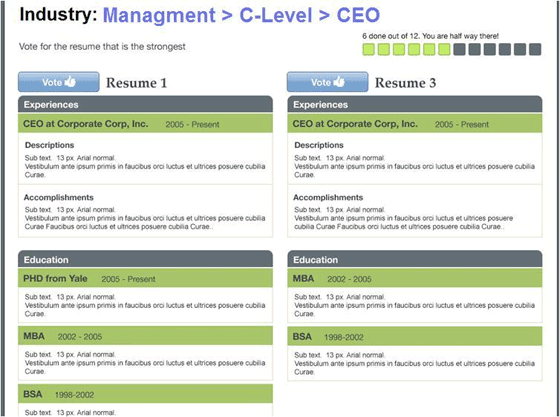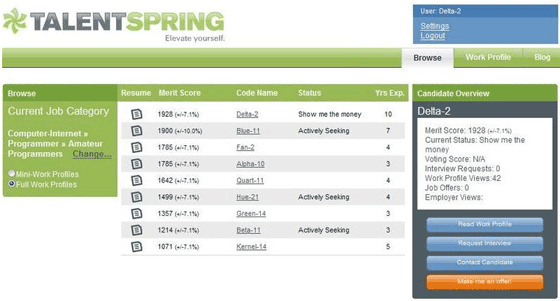 Seattle based TalentSpring launches today with a unique product that has the potential to disrupt the online resume marketplace.
Seattle based TalentSpring launches today with a unique product that has the potential to disrupt the online resume marketplace.
Headed by former Windows Live Development Leader Bryan Starbuck and Andrew Boardman, TalentSpring brings the ideals behind social voting sites such as Digg to the resume marketplace. But it would be unfair to compare the service to Digg and its army of clones; it’s just difficult to compare it to anything else.
Like traditional resume marketplaces, TalentSpring is database of resumes from those seeking work or looking for new employment opportunities. Where as tradition resume marketplaces are generally search driven databases, categorized by user submissions based on location, experience etc, TalentSpring uses a ranking system to rate resumes so that top resumes float to the top of TalentSpring whilst lesser resumes drop.
Resumes are ranked by other job seekers. Upon signing up and submitting your resume, to have your details included on TalentSpring you must score 12 sets of other candidates in your own professional area.
The voting system is a one resume or another proposition x 12. Users are presented two resumes side by side and must mark which candidate they feel is better suited for a position in that particular field.
I asked Bryan Starbuck why only 12 and not more? TalentSpring has extensively tested the system with employers, recruiting firms and job seekers. They found that 12 was an idea number. It allows TalentSpring to gain a broad enough scope of user submitted data to adequately rank candidates without making the review task too long for the end user.
As a recruiter there is nothing worse than receiving 300 resumes in the mail and the same again on email for an advertised position. Days are wasted filtering through candidates trying to formulate a shortlist for interview. TalentSpring aims to bypass most of that for recruiters by only delivering superior candidates for a position. The ranking system is combined with an in-depth filtering system that limit candidates based on the wants of both the recruiter and the job seeker. For example, if a job seeker is only looking for jobs that pay $100,000 and above they can only be contacted by recruiters with job opportunities in that category.
Starbuck compares TalentSpring to Zillow.com and FareCast.com. All use advanced mathematics and data mining, read data from two sides of a transaction and aggregate/ calculate valuations by looking at a holistic view of the entire market.
Costs for the service are highly competitive, starting at $195 for a single position with various unlimited use packages also available.
TalentSpring as a service is going to appeal to a broad range of people in recruiting positions. I may be biased in my review as I’ve been in positions previously that involved recruitment, so I know the pain involved in recruiting people. If TalentSpring gains traction and builds up a decent range of resumes, it’s a service I would happily use myself and I believe others are likely to use it as well.

